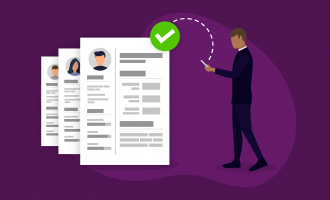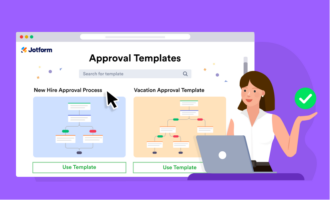Being part of a small business or startup can be incredibly exciting. You’re always coming up with creative ways to solve challenges and taking on new roles. But as your organization grows, you need a bit more structure.
Payroll gets more complicated, benefits packages expand, interpersonal conflicts crop up, and someone needs to be sure that the great culture you had when there were only four employees still exists when there are 14, 40, or 400 employees.
If you’re getting overwhelmed by or just don’t have time for any of the above, you should probably consider adding HR. But how do you start an HR department? Don’t fear! We’ve got you covered.
Pro Tip
Manage your HR department like a pro with free online HR forms that can be filled out on any device.
The benefits of HR
You might be asking, “What does HR even do, and why can’t I just buy some HR software and call it good?” While HR software is an essential tool for HR professionals, there’s a human element to managing HR responsibilities that software can’t do on its own.
The BambooHR blog breaks down HR’s role into six essential functions:
- Tracking applicants and hiring strategically
- Managing benefits and time off
- Training managers and employees
- Streamlining the onboarding process
- Resolving interpersonal conflicts
- Ensuring labor and employment laws are being followed
It might be easy enough for executives in a very small business to manage these things on their own, but these types of tasks multiply quickly as your organization grows. Without HR taking care of these things, you may wind up with poor hiring practices, a lack of benefits management, employees who don’t feel committed to your organization, and even a toxic work environment.
How to start an HR department
Here’s how to build your HR department from the ground up:
Set clear expectations
You’ll need to hire one or more HR pros to run your HR department, and whether you’re bringing in a new hire or promoting someone at your organization, you need to clearly define what you expect from them.
Take some time to sit down and thoughtfully consider which tasks you want HR to own and the strategic role you want them to play. You may also need to clarify expectations for other employees as you reallocate tasks to the new HR pro to avoid duplication of effort or conflict over responsibilities.
Provide support
If you don’t have an HR team in place, you probably don’t have an onboarding process yet. So it will be your job to teach your new HR pro the systems you have in place at your organization. HR departments are constantly getting questions about all things benefits, time tracking, and payroll, so be sure your new HR pro is well versed in these processes and policies at your company.
Create a checklist
Neither Rome nor the HR department was built in a day. It’s going to take some time for your new department to be fully functional. Work through things step by step, creating a checklist of the HR policies and procedures that need to be established or revamped. To get started, you can use this sample checklist and adjust it as necessary for your organization:
- Create a basic plan for the structure and operation of your HR department.
- Establish onboarding and recruiting procedures.
- Outline regulations for compliance, safety, and health.
- Determine compensation and benefits.
- Create a way to gather employee feedback.
- Develop training programs and performance management methods.
- Find a Human Resource Information System (HRIS) suited to your organization (more on this below).
- Establish a compliance review system in preparation for audits.
- Create a detailed action plan.
Don’t get overwhelmed by everything that needs to be done and all of the new programs that need to be created. Give your HR pro the tools and direction they need, and you’ll quickly see results.
HRIS vs spreadsheets
Speaking of tools, you may be tempted to write off an HRIS as an unnecessary expense (after all, you just figured out how to reallocate the funds for an HR department), but an HRIS will instantly take your HR department to the next level.
While complicated spreadsheets and paper forms can slow your HR team down, an HRIS will easily manage your people data — like employee demographic information, job information, benefits selection, and time-off requests — in a cloud-based system. Automating these tasks will allow your new HR department the time they really need to dive into all those processes your company was missing, like an onboarding program, a company culture initiative, and a performance management system.
HR is an essential part of running your business, and at some point, every successful organization grows enough to need a department dedicated to this function. That exact timing will depend on your company, but once you have an HR team, you’ll wonder why you ever thought you could exist without one.















































Send Comment: